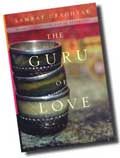 It is a matter of great significance that of late we have writers with Nepali background writing in English. Representing a tiny section of Nepali demographic terrain that has chosen to globalise, writers like Samrat Upadhyay and Manjushree Thapa speak to an English-reading audience to make their identity as well as fortunes. Even as they write to cater to the taste of western readers, their writing is fluid, engaging and has secured them a mostly warm response from Western reviewers.
It is a matter of great significance that of late we have writers with Nepali background writing in English. Representing a tiny section of Nepali demographic terrain that has chosen to globalise, writers like Samrat Upadhyay and Manjushree Thapa speak to an English-reading audience to make their identity as well as fortunes. Even as they write to cater to the taste of western readers, their writing is fluid, engaging and has secured them a mostly warm response from Western reviewers. In addition to translating some Nepali works into English, Manjushree has attempted a cultural intervention through her debut novel The Tutor of History. Samrat has a collection of stories and his first novel The Guru of Love just launched in the US. However, the way these authors have started to conduct themselves in public has been of some concern-from the view they seem to hold about their own place in the republic of letters to marketing of Nepalis (especially women) in their works to their Western audience.
As a woman I am uncomfortable with Samrat's representation of Nepali women, who, in his stories, are no more than sex objects. Nor can I understand Manjushree's (in spite of her courageous feminist voice in other write-ups) uncritical enthusiasm about him ("I rely on the muse of hard work", #128). Samrat's misogyny is packaged in his artistically sophisticated methods.
 His women are sometimes made awesomely divine as Goma in The Guru of Love or just sexually available as in his story "The Good Shopkeeper", only to gratify the male (Samrat's own) desire for sexual transgression and adultery. One may say they are only characters, but look at what Samrat himself says in his chat: "Goma shows the complexity with which women must negotiate their existence in our culture."
His women are sometimes made awesomely divine as Goma in The Guru of Love or just sexually available as in his story "The Good Shopkeeper", only to gratify the male (Samrat's own) desire for sexual transgression and adultery. One may say they are only characters, but look at what Samrat himself says in his chat: "Goma shows the complexity with which women must negotiate their existence in our culture." What does Samrat want? Just a perpetuation of that condition through his narrative? And how many women today would want or do what Goma does: ask her husband to bring in his mistress? What is Samrat asking us Nepali women to do? How much water does his sweeping generalisation of Nepali women hold? I can't understand how Manjushree, who manages to let her widowed character love a man again in her Tutor of History, appreciates Samrat's patriarchal, Freudian fabulations.
When Manjushree once said she wanted to stop writing for the Nepali literature column in Nepali Times because she did not get enough feedback, I was sad. But now I understand the latent message after reading her question to Samrat in her writerly chat. She asks him to comment on a rumour, "word has it that . . . some professors at the Tribhuvan University English department have discouraged academic discussion of your writing." I only remember a large number of the now implicated faculty talk enthusiastically about his and Manjushree's works on several occasions, and my taking exception to victimisation of females in Samrat's imperial stories. Perhaps it is Manjushree's chagrin more than Samrat's that her novel is not taught at Tribhuvan University. Wouldn't it help to remember that, standardised canons aside, no such sponsorship is essential to any writer's repute?
 Manjushree and Samrat must also renegotiate their selves and the identities they are projecting through critical debates and writings. Of course, they are free to write what they want to, but it won't do them any good by objecting to discussions on their representation of Nepal (and we Nepali hapless lot) by Nepali readers. The question of representation is not an anachronistic subject as Samrat thinks. Surf the net or shuffle through any current journal in literary or cultural studies and you will be astonished by how much of the discussion on representation of gender, race, ethnicity, class, nation, and various power structures in literary/cultural artifacts informs the research. If Samrat is projecting himself as a Nepali, he need not forget the decency of mutuality.
Manjushree and Samrat must also renegotiate their selves and the identities they are projecting through critical debates and writings. Of course, they are free to write what they want to, but it won't do them any good by objecting to discussions on their representation of Nepal (and we Nepali hapless lot) by Nepali readers. The question of representation is not an anachronistic subject as Samrat thinks. Surf the net or shuffle through any current journal in literary or cultural studies and you will be astonished by how much of the discussion on representation of gender, race, ethnicity, class, nation, and various power structures in literary/cultural artifacts informs the research. If Samrat is projecting himself as a Nepali, he need not forget the decency of mutuality. If Samrat and Manjushree want our support, where is the reciprocity? Moreover, why does Samrat, a diehard fan of post-colonialist theories, not want to recall Gayatri Spivak's idea of an author as a limited sample (of her culture, etc) and Homi Bhabha's concept of a culture's location? Can an author escape that trap? Or are these authors displaying their cultural situatedness by hanging on to corrupt and vanishing cultures like polygamy (as in The Guru of Love) or unethical, irresponsible sexual adventures, to provide the West with yet another exotic version of Nepal in the name of "deconstructing" her earlier misrepresentation?
As a well-wisher of these authors, I'm worried by their present trend of squandering energy in reader-bashing and exoticising Nepali in Freudian terms. Samrat looks all set to continue packaging Nepalis as solely governed by their libidinal drives (as if there are no other contexts and conditions), and especially women as sex objects, with Manjushree patting him on the back. This will preclude a more rigorous cultural work in the interest of transforming the reality that Manjushree in her novel only begins to identify. I'm not trying to start a quarrel, but good friends should not refrain from healthy criticism.
(Aruna Kandel did her MA in geography from Tribhuvan University, where she was also a student of English.)
BOOK REVIEW
For the love of a guru >>


